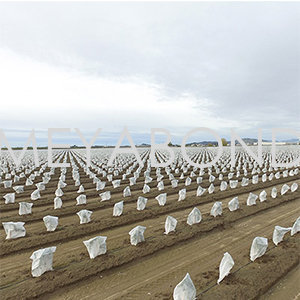Understanding Silo Sacks: A Key Tool for Modern Agriculture
Silo sacks are large, flexible bags used for temporary storage of harvested grains, seeds, and other agricultural products. They are designed to provide an efficient, cost-effective solution for farmers looking to protect their produce from environmental factors such as moisture, pests, and spoilage. Traditionally, farmers have relied on silos for storage, but silo sacks offer distinct advantages that make them increasingly popular in modern agricultural practices.
One of the primary benefits of silo sacks is their versatility. Unlike rigid silos, which require substantial investment and permanent installation, silo sacks can be deployed quickly and moved easily as needed. This flexibility allows farmers to adapt their storage solutions based on their current harvest sizes and crop types, making it easier to manage varying production levels throughout the year.
Additionally, silo sacks are designed to be airtight, which helps in minimizing spoilage and maintaining the quality of stored products. This is particularly important for crops sensitive to humidity and temperature fluctuations. By creating a controlled environment within the sack, farmers can significantly reduce the risk of mold growth and insect infestations. This storage solution is especially beneficial for maintaining the integrity of high-value crops, ensuring that they retain their market value until they are ready to be sold or processed.
From a logistical perspective, using silo sacks can also streamline operations. They can be filled quickly and usually require fewer labor resources than traditional silo systems. This efficiency not only saves time but also reduces labor costs, allowing farmers to allocate their resources more effectively. Furthermore, the ability to store grains on-site using silo sacks means that farmers can have greater control over their inventory, enabling them to respond promptly to market demands.
In recent years, innovations in materials and design have further enhanced the effectiveness of silo sacks. Many modern versions are made from durable, UV-resistant materials that provide even better protection against environmental challenges. Additionally, some designs incorporate features such as venting systems to facilitate gas exchange, further improving the storage conditions for sensitive crops.
In summary, silo sacks have emerged as a valuable tool in the agricultural sector, offering a flexible and efficient solution for the storage of grains and other crops. Their ability to protect produce from spoilage and pests, combined with their ease of use and logistical advantages, makes them an essential resource for farmers looking to optimize their operations. As the agricultural industry continues to evolve, the role of silo sacks is likely to expand, contributing to more sustainable and profitable farming practices.
One of the primary benefits of silo sacks is their versatility. Unlike rigid silos, which require substantial investment and permanent installation, silo sacks can be deployed quickly and moved easily as needed. This flexibility allows farmers to adapt their storage solutions based on their current harvest sizes and crop types, making it easier to manage varying production levels throughout the year.
Additionally, silo sacks are designed to be airtight, which helps in minimizing spoilage and maintaining the quality of stored products. This is particularly important for crops sensitive to humidity and temperature fluctuations. By creating a controlled environment within the sack, farmers can significantly reduce the risk of mold growth and insect infestations. This storage solution is especially beneficial for maintaining the integrity of high-value crops, ensuring that they retain their market value until they are ready to be sold or processed.
From a logistical perspective, using silo sacks can also streamline operations. They can be filled quickly and usually require fewer labor resources than traditional silo systems. This efficiency not only saves time but also reduces labor costs, allowing farmers to allocate their resources more effectively. Furthermore, the ability to store grains on-site using silo sacks means that farmers can have greater control over their inventory, enabling them to respond promptly to market demands.
In recent years, innovations in materials and design have further enhanced the effectiveness of silo sacks. Many modern versions are made from durable, UV-resistant materials that provide even better protection against environmental challenges. Additionally, some designs incorporate features such as venting systems to facilitate gas exchange, further improving the storage conditions for sensitive crops.
In summary, silo sacks have emerged as a valuable tool in the agricultural sector, offering a flexible and efficient solution for the storage of grains and other crops. Their ability to protect produce from spoilage and pests, combined with their ease of use and logistical advantages, makes them an essential resource for farmers looking to optimize their operations. As the agricultural industry continues to evolve, the role of silo sacks is likely to expand, contributing to more sustainable and profitable farming practices.
Key words:
Related News
06-08
06-02
CONTACT US
Email: sales8@meyabond.com
Tel: +8618911966213
No.3 Yard, ZhongHe Road, 100071,FengTai District, Beijing, China
Email: sales8@meyabond.com
Tel: +8618911966213
No.3 Yard, ZhongHe Road, 100071,FengTai District, Beijing, China
















